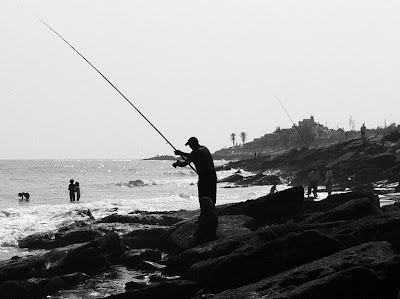The traditional dress


The traditional dress for men is called a djellaba, a long, loose, hooded garment with full sleeves. For special occasions, men also wear a red cap called tarboosh and mostly referred to as Fez. Nearly all men wear babouches soft leather slippers with no heel, commonly in yellowbut also in many colours.
Many women do as well but others wear high-heeled sandals, often in silver or gold tinsel.
The distinction is the djellabas has a hood, while a Gandora does not. The women?s djellabas are mostly of bright colors with ornate patterns, stitching, or beading, while men wear djellabas in plainer, neutral colors. Women are strongly attached to their Moroccan clothes or "Moroccan wardrobe", despite the financial costs involved.
The production of such garments is relatively expensive, as most of the work is done by hand. Despite the costs involved most women purchase a minimum of one new kaftan or "tk'chita" every year, normally for a special, social event, such as a religious festival or a wedding. Nowadays, it is an unwritten rule that Moroccan dress is worn at such events.
The Gandora is very simular to the Djellaba the differance being the Djellaba has a hood and short sleeves. Masculine embroidery on the front around the neck and arms openings. For a convenient use, this garment has one slit on side and one pocket on the other side at the waist level.This gandora is made with cotton and is more suitable for summer use.
The origins of the fez, or "tarboosh" in Morocco, is not clear. The design may have come from ancient Greece or the Balkans. In the 19th Century it gained wide acceptance when the Ottoman rulers moved to modernize traditional costumes.
morocco culture,moroccan food,morocco food,moroccan cuisine,morocco beaches,moroccan meal,beaches in morocco,moroccan culture,hercules cave,hercules cave morocco
























